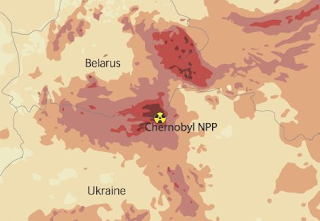Over the course of the year doing grad school work at UW-Madison, I’ve written a few different articles for class assignments. I’ve decided to publish this article here, though it should be noted that this was written in December 2010 from interviews conducted throughout the Fall of 2010. I feel that the information and perspectives still hold a lot of value, so I wanted to share it anyway.
***
Managed relocation is a potential solution to the biodiversity loss posed by climate change, but the policy’s unpredictable risk ignited the scientific community in a debate that questions how society views conservation in the context of impending extinction.
Every summer, your backyard garden produces a cornucopia of vegetables because it gets enough sunlight and rain to make your plants bloom. But, then your neighbors plant trees in their yard that cast a shadow on your garden. Without sunlight your plants wilt and suddenly its goodbye tomatoes. So what do you do? Well, next year you move the garden to a sunnier spot. Problem solved.
Moving your garden to a sunny spot is an easy way to keep up with the changing environment of your backyard, but would it work on a larger scale?
The rapid changes to ecosystems around the world predicted by the International Panel on Climate Change (IPCC) include the widespread extinction of species that don’t adapt fast enough. That is, unless a policy like “managed relocation” — the shifting of species to new environments to counteract the affects of climate change — can be implemented successfully.
Some conservationists in the United States have jumped on the idea of managed relocation. The most notable project so far is the transportation of the Torreya (Torreya taxifolia,) a conifer tree, from Florida to North Carolina by the independent group the Torreya Guardians. Whether the Torreya experiment will work is unknown, but it has drawn attention to the risk associated with relocating species.
 |
Torreya taxifolia
via Wikimedia Commons |
Unlike moving your garden to that perfect sunny spot, moving species involves a fragile web of ecological connections that when broken, could create more problems than solutions.
Managed relocation is exemplary of an overall trend in ecology toward an interventionist approach focused on species. This trend is a challenge to previously established conservation policy that focused on protecting habitat to help species, and has opened debate about whether human meddling will save or sacrifice Earth’s biodiversity.
David Richardson, Professor of Ecology and Deputy Director of Science Strategy at the University of Stellenbosch (South Africa,) says whether more attempts at managed relocation will be made and whether they occur with the sanction of government will depend on the success of projects like the one conducted by the Torreya Guardians.
“A few spectacular failures would probably nail the coffin on the concept,” said Richardson in an email message. “Managed relocation is undoubtedly very risky and the practice could cause more problems than it solves. But then, losing species is also very risky, so the price of taking no action could be very high, perhaps higher than undertaking managed relocation.”
The Risky Business of Managed Relocation
Moving species through managed relocation poses both a risk of total failure, and a risk of extreme success. The fragile connections between species in an ecosystem cannot be easily replaced, and even the most heavily researched relocations can fail completely. Unexpected new connections can also form, causing a species to explode in their new habitat and become invasive.
“The way managed relocation gets framed is that it is a trade off,” said Jason McLachlan Assistant Professor of Biological Sciences at the University of Notre Dame. “On the one hand you don’t want species that you care about to go extinct, but on the other hand we have a bad track record with moving species around. We come with good intentions but cause more problems.”
According to Ralph Grundel, a research ecologist with the United States Geological Survey (USGS) in Porter, IN the complex science of moving species is enough reason to be skeptical that managed relocation will succeed. Grundel’s own work relocating the Karner Blue Butterfly only a few miles away from its natural range has failed, even after extensive research into the habitat specifications needed by the species.
 |
| Karner Blue Butterfly Source: Wikimedia Commons |
“When you introduce a new species into another species range, you are rolling the dice because you don’t know how the species will interact,” said Grundel. “It can be really challenging, so aside from the ethics of whether we should meddle, our ability to succeed if we wanted to do these things I’m pessimistic about.”
With debate mounting about whether humans could or should micromanage the survival of species, researchers like McLachlan and Grundel say that a redefinition of the way the US thinks about conservation is needed to consider the ethical problems posed by intervening.
From conservation to intervention
According to Ben Minteer, Associate Professor at the Center for Biology and Society at Arizona State University, for over a century the United States’ stance on conservation (outlined by the Endangered Species Act) has been to protect species from human involvement in the species native environment. But, if the habitat can’t be maintained – due to climate change – then a new policy will be needed.
“Now things are changing,” said Minteer. “In the most extreme cases we have to go in and round the species up and move them to a place that is different from their native range. If we don’t do that we’re committing them to extinction.”
According to Minteer, the majority of researchers who have investigated the implications of climate change on biodiversity are in agreement that a plan is needed for future action. But, whether managed relocation is that plan is uncertain.
“What we are going to be forced into is this strong interventionist approach to conservation,” said Minteer. “I say this with a heavy heart, but we are moving toward a planetary management situation where we become much stronger manipulators of the landscape to make it more amenable to saving species, and to make sure that it provides the services that humans depend upon.”
“We really don’t know what we’re doing,” said Jessica Hellmann an Associate Professor in the Department of Biological Sciences at the University of Notre Dame. “But everything that we do has side affects.”
Hellmann says managed relocation can be thought of like a medical treatment. Cancer patients are given chemotherapy even though it has detrimental side affects, because the treatment is more beneficial than the side affects are harmful. Managed relocation may be a treatment for species suffering from climate change, but researchers don’t know if the benefits will outweigh the side affects.
Researchers are experimenting to figure out which species can be moved, and where they can go based on climate change models. “We want to create the sweet spot,” said Hellmann. “You want the population to be successful, you just don’t want it to be so successful that it starts overwhelming other species and damages the ecosystem.”
While some researchers are busy figuring out the feasibility of managed relocation, others have taken a different approach to finding solutions to the extinction problem posed by climate change.
“We aren’t going to be good at managed relocation, and the consequences of not being good at it go back to this larger issue of how we as a society deal with changing climate,” said McLachlan.
According to McLachlan, instead of trying to make solutions like managed relocation feasible researchers should attack the underlying problem, climate change itself.
“The idea that any of these other plans is going to be easier and less expensive than just reducing green house gas emissions isn’t true,” said McLachlan. “At least with green house gases we know how to reduce them and we know it would work.”
When compared, the uncertainty of managed relocation makes the certainty of reducing green house gas emissions a sensible undertaking.
“Right now our path is to totally perturb the earth and then go around and fix it afterwards,” said McLachlan. “If you don’t like that option, you might think about not breaking the entire Earth system in the first place.”
According to Grundel, the United States is in the middle of what he calls “devilishly difficult decisions,” about ecological policy. While researchers may be at odds about human interference, one thing is certain – rash future action could trigger unexpected detrimental effects.
“We’re doing an unprecedented manipulation of earth’s atmosphere, but we can’t predict the dynamics,” said McLachlan. “The answer is we better be careful, everyone lives on this planet, so it’s really not a good idea to do an unprecedented experiment on it.”







